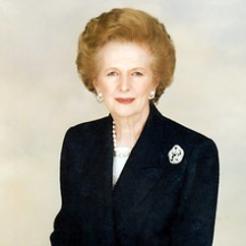Central government grants to voluntary organisations more than tripled from £93m when Margaret Thatcher first came to power in 1979 to £292m in 1988, eight years into her 11-year reign as Prime Minister.
And the numbers of registered charities increased from over 132,300 in 1980 to over 171,000 in 1990.
The figures are contained in a report published in the Contemporary British History journal, of a ‘witness seminar’ that was convened in 2011 to discuss the voluntary sector in 1980s Britain.
The witnesses that attended included Nicholas Deakin, Julia Unwin, Michael Brophy, Richard Fries, Sir Stuart Etherington, Justin Davis Smith and Jerry White, described in the report as “key players from that era” who were invited to “consider what the relationship of the voluntary sector was to the Thatcher administration”.
The author, Professor Nicholas Crowson from the University of Birmingham, begins his report: “With the Cameron government seeking to encourage a new generation of volunteers to participate in a ‘Big Society’, it appears opportune to examine how a previous Conservative administration perceived voluntary action.”
He cites a Home Office report from 1986 and concludes: “The language here is so similar to the present-day rhetoric of the Big Society that there is clearly much to be learned from the experience of the voluntary sector in the 1980s.”
Later he writes: “Just as commentators have questioned whether there is an ideological underpinning to the Big Society, similar questions were raised of the 1980s. Through the 1980s two strands of Conservative policy and thinking would develop. Firstly, and more generally, the move from grants to contracts and the imposition of the so-called ‘contract culture’ was central. Secondly, the emphasis on individual volunteering was paramount too.”
By the late 1970s, he wrote, many in the sector were calling for less involvement with the State, yet sector organisations found themselves increasingly drawn into the provision of services. “Once co-opted many found themselves locked into that relationship as they were confronted with increased needs for funds and increasing demand for their services…it meant that any sudden change in government funding priorities could spell disaster for organisations that had become overly dependent upon particular revenue streams.
“This relationship did not go unchallenged and it is clear that individuals within the voluntary sector were unhappy and anxious that they were being politically compromised by being seen to deliver politically motivated policies.”
However, the 1980s also saw some innovations, particularly in taxation, which benefited the sector. Charitable donations became exempted from Capital Transfer Tax, and the threshold for incurring inheritance tax liabilities on legacies was raised. The government also adopted a suggestion from the NCVO that charities which disposed of properties would be liable to development land tax.
“The 1983 Conservative Campaign Guide claimed that it had given the voluntary sector tax measures to its benefit to the figure of £30m,” Crowson wrote.
“The experience of the 1980s for the voluntary sector was therefore double-edged and complicated,” he concluded.
“Greater freedom and influence might have come with expansion and growth for certain organisations, but the issues of co-option and constraint were ever-present too.
“In this sense, the relationship , or the boundary, between the government and the voluntary sector in the 1980s was just a snapshot of a longer history of a ‘moving frontier’.”
Click here to read Crowson’s full article and click here to watch a video of the witness seminar.









